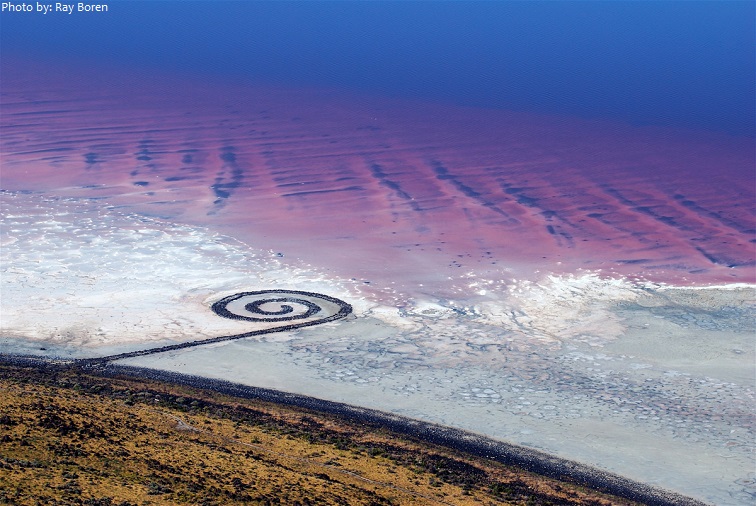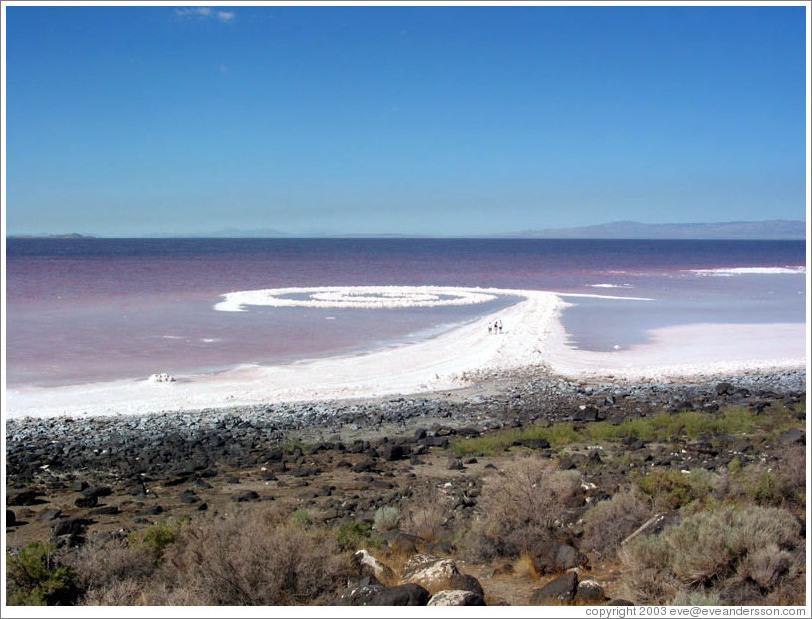
Check out a Spiral Jetty Family Backpack at the UMFA, the Salt Lake City Public Library, or the Logan Library.
Spiral jetty great salt lake download#
Download the experiential guide to help you explore the earthwork.Download the self guide for history, directions, and travel tips.1970, though objects from the collections of the UMFA and the J. Visit Time Trip: Utah, Spiral Jetty, and Robert Smithson in the 1970s to explore contemporary events in the Salt Lake Valley and the University of Utah (the U) ca. On the occasion of Spiral Jetty's fiftieth year, the Utah Museum of Fine Arts invited four brilliant Utahns to share their perspectives. The close communion between Spiral Jetty and the super-saline Great Salt Lake emphasizes the entropic processes of erosion and physical disorder with which Smithson was continually fascinated. However, the earthwork is affected by seasonal fluctuations in the lake level, which can alternately submerge the work or leave it completely exposed and covered in salt crystals. Using natural materials from the site, Smithson designed Spiral Jetty to extend into the lake several inches above the waterline. Rozel Point attracted Smithson for a number of reasons, including its remote location and the reddish quality of the water in that section of the lake (an effect of algae). Its exceptional art historical importance and its unique beauty have drawn visitors and media attention from throughout Utah and around the world.

Undoubtedly the most famous large-scale earthwork of the period, it has come to epitomize Land art. Made of black basalt rocks and earth gathered from the site, Spiral Jetty is a 15-foot-wide coil that stretches more than 1,500 feet into the lake. The monumental earthwork Spiral Jetty (1970) was created by artist Robert Smithson and is located off Rozel Point in the north arm of Great Salt Lake. wide. © Holt/Smithson Foundation and Dia Art Foundation, licensed by VAGA, New York. Throughout, the artist describes the history, coordinates, and processes that informed the evolution of this historic project.Robert Smithson (American, 1938–1973), Spiral Jetty, 1970, Rozel Point, Great Salt Lake, Utah, black basalt rock, salt crystals, earth, and water, 1,500 ft. Smithson’s film Spiral Jetty records the siting and making of the sculptural work, interspersing imagery of maps, aerial views of the lake, and footage of Smithson driving through the Utah landscape. Since 1999, Dia Art Foundation has owned and stewarded Spiral Jetty.īecause of Land art’s often remote locations and temporary durations, works were documented through notes, photographs, video, and film. For the past 20 years, it has been mostly accessible and many have made pilgrimages to experience the work in person. Indeed, Spiral Jetty has been vulnerable to the natural forces of its location: from 1972 to 2002, the work was submerged due to the lake’s rising water levels.
Spiral jetty great salt lake portable#
A work of art when placed in a gallery loses its charge, and becomes a portable object or surface disengaged from the outside world.”1

As Smithson wrote soon after completing Spiral Jetty, “Artists themselves are not confined, but their output is. The movement also represents the pursuit of new locations to display art beyond the traditional spaces of museums and galleries. It reflects artists’ interest at that time in rethinking some of the oldest conventions in art, notably permanence: given their materials and outdoor settings, these works were inherently subject to deterioration and decay. A branch of Conceptual art from that period, Land art encompasses work made and sited in the landscape with natural materials. Spiral Jetty is one of the best-known works associated with the 1960s and ’70s movement Land art.

16 mm film on video, color, sound 35 min.


 0 kommentar(er)
0 kommentar(er)
